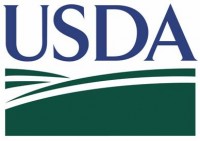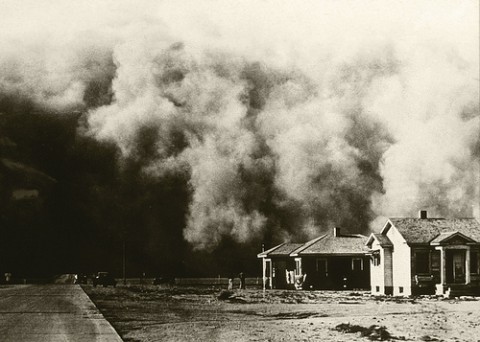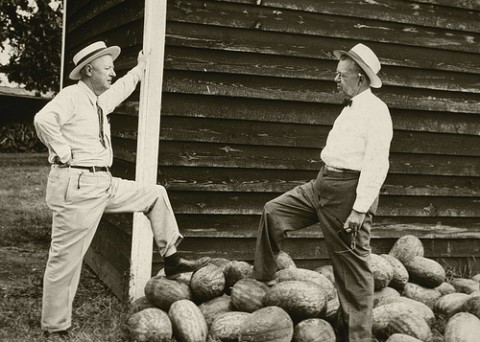Washington, DC –  Imagine looking out the window and seeing an enormous black cloud heading straight for your home. This frightening experience was a common one for people who lived through the Dust Bowl in the 1930s.
Imagine looking out the window and seeing an enormous black cloud heading straight for your home. This frightening experience was a common one for people who lived through the Dust Bowl in the 1930s.
During this period, farmers across the Great Plains over-planted, over-plowed and over-grazed their land. The combination of destructive farming techniques and a persistent drought caused 100 million acres of Great Plains farmland topsoil to blow away over several years and created the worst manmade ecological disaster in U.S. history. In some cases, the billowing dust clouds reached as far as the Atlantic Ocean!

This series of events—collectively referred to as the Dust Bowl—prompted Congress to create the Soil Conservation Service, a federal agency dedicated to taking care of our nation’s soil. The agency later changed its name to the Natural Resources Conservation Service (NRCS) and expanded its mission from reducing soil erosion to conserving all natural resources.
On November 18 and 19, the documentary The Dust Bowl, which chronicles the human stories behind the cataclysmic events of the 1930s, will show on PBS stations nationwide. The Soil Conservation Service and its beginnings play a key part in this documentary.
These days, NRCS works one on one with private landowners to implement conservation practices that help protect natural resources like water, air, plants and animals. Over the past 77 years, NRCS has worked with farmers and ranchers to put conservation on more than 97 million acres of agricultural and forest lands nationwide.

But soil conservation remains a priority, as it helps producers increase their yields while ensuring the land becomes more resilient to erosion, drought and other natural resource threats. Many conservation practices help improve soil quality—because healthy soils are the foundation for healthy working lands. Furthermore, USDA studies show that soil erosion is reduced by 43 percent on lands that use conservation practices.
Hugh Hammond Bennett, the founder of the Soil Conservation Service, said “Take care of the land and the land will take care of you.” This statement is truer than ever, as NRCS, like other USDA agencies, works to address modern issues like climate change and develops methods for feeding an ever-growing population.
Check out more conservation stories on the USDA blog.
Follow NRCS on Twitter.


